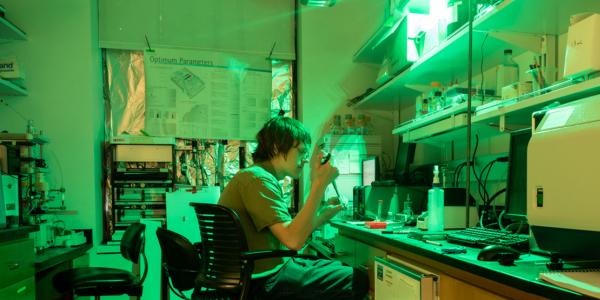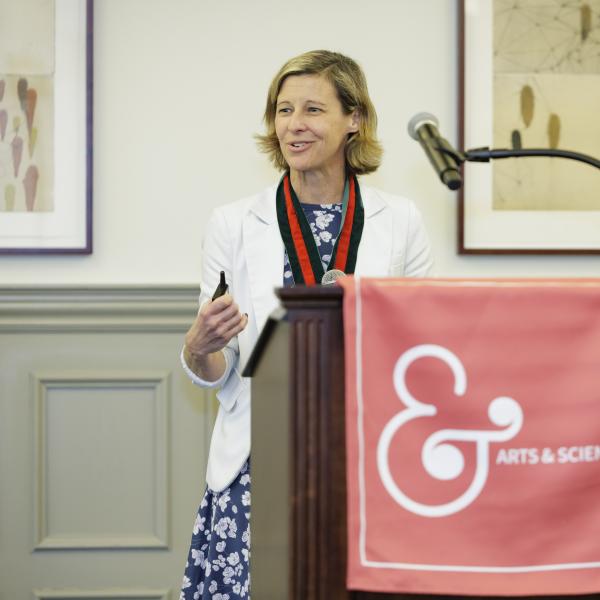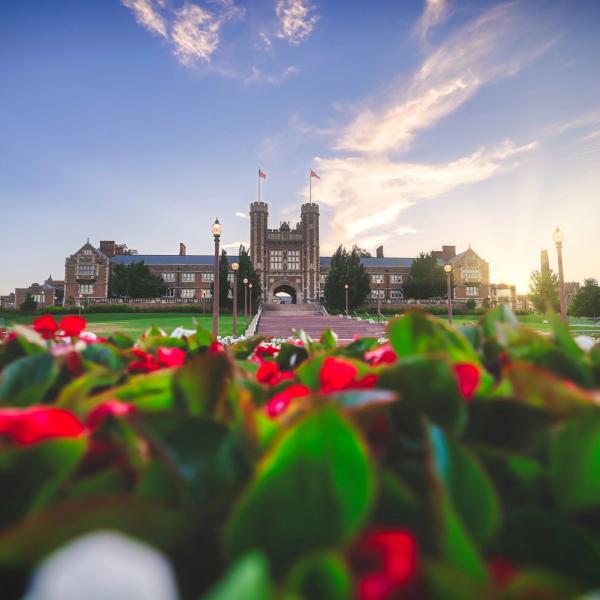New species are not hidden only in exotic locales. Recently, graduate student Ben Wolf found a new species of alga in Forest Park.
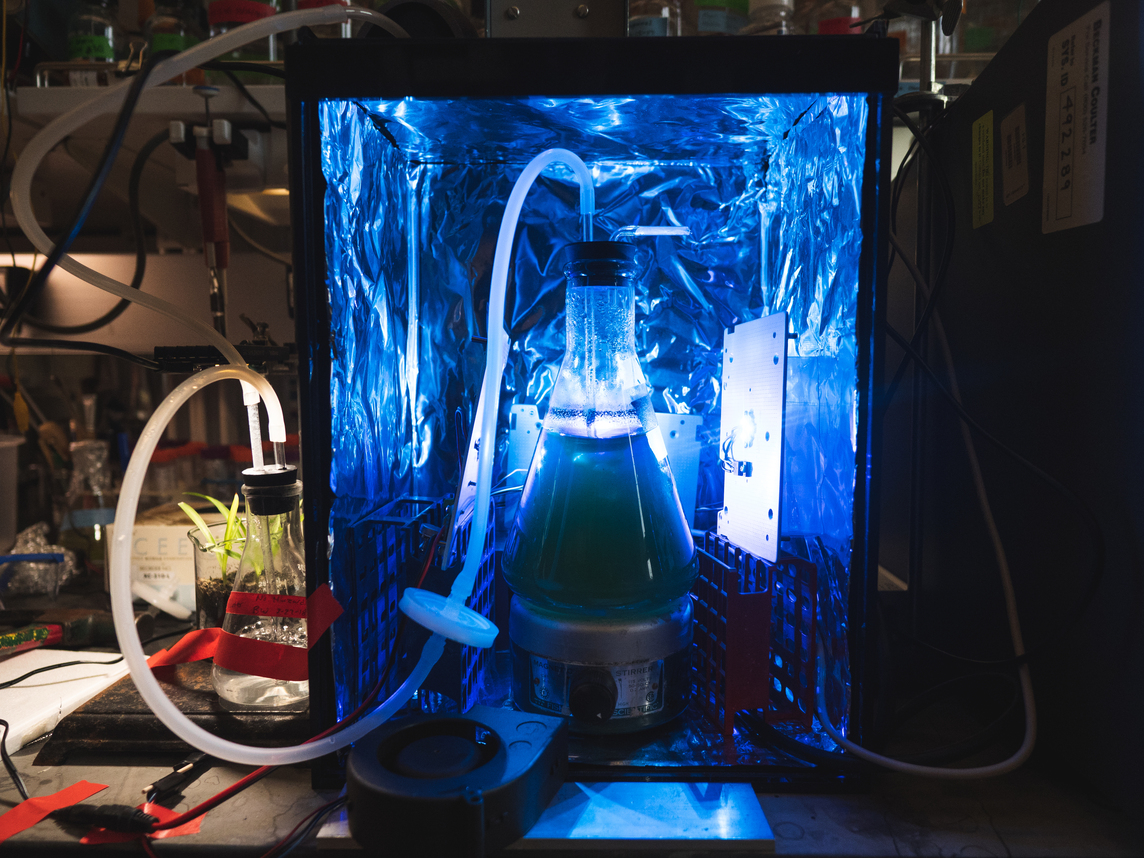
The cabinets surrounding the lab bench of Ben Wolf, a fourth-year graduate student in Plant and Microbial Biosciences, look rather typical. But plastered across them are large labels warning his labmates about the painfully intense light inside. These cabinets, custom-built by Wolf, house photosynthetic growth chambers, where various types of microbes harvest light from extremely powerful LEDs. Some glow bright blue, others bright white. Some of the systems are even liquid-cooled, similar to high-end gaming computers. One variety of growth chamber, though, appears much less bright. This is the far-red growth chamber, and the microbes growing inside thrive on light that is barely visible to human eyes.
Wolf’s doctoral research in professor Robert Blankenship’s lab involves studying a type of photosynthesis that uses light on the far-red end of the spectrum, just beyond the wavelengths that humans can see. His work relies on both his scientific background in spectrophotometry as well as his hobby of building lamps, lights, and other gadgets with LEDs.
The vast majority of the estimated 8.7 million species on planet Earth remain undiscovered. Finding a new species takes some luck, a good eye, and a creative approach. Wolf combined all three to nab a novel microbe that thrives on this particular type of light.
Finding a new species takes some luck, a good eye, and a creative approach. Wolf combined all three.
Sunlight contains a large amount of far-red light in addition to the visible light that most plants use. This far-red light, its wavelength between red and infra-red, remains available in the shade under other plants and contains enough energy to power living things that are able to harvest it. “These longer wavelengths, typically wasted in many ecosystems, are a potentially ignored source of photosynthetic energy,” Wolf explains.
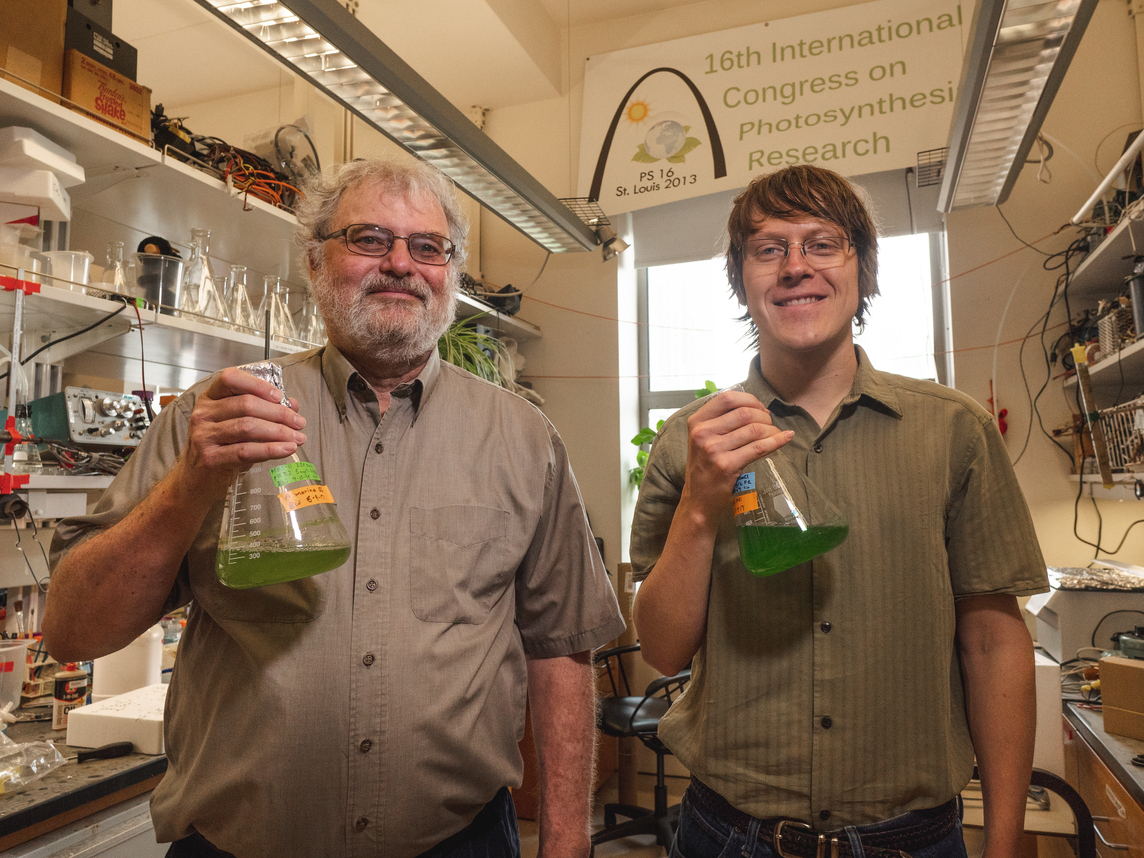
The Blankenship lab studies how plants, algae, and bacteria collect light. That light powers the biochemical reactions that drive photosynthesis, which allows plants to convert carbon dioxide and water into sugars. Most photosynthetic organisms use visible light, but a few can use far-red light. Wolf predicted that in shaded environments, where other plants have absorbed most visible light, a few organisms could thrive on the remaining far-red light, because they have evolved tricks for harvesting it.
When Wolf set out to study far-red light photosynthesis, he took his sampling equipment around Forest Park, on hiking trips, and even on family vacations. He collected samples from shaded environments, including from a slow-moving circulating pond in Forest Park. Wolf brought his samples to the lab, added nutrients, and incubated them in his far-red chamber. Any organism that needed visible light was at an insurmountable disadvantage. Only species that could harvest far-red light could survive the weeks of intense selection under these conditions.
When Wolf set out to study far-red light photosynthesis, he took his sampling equipment around Forest Park, on hiking trips, and even on family vacations. He collected samples from shaded environments, including from a slow-moving circulating pond in Forest Park.
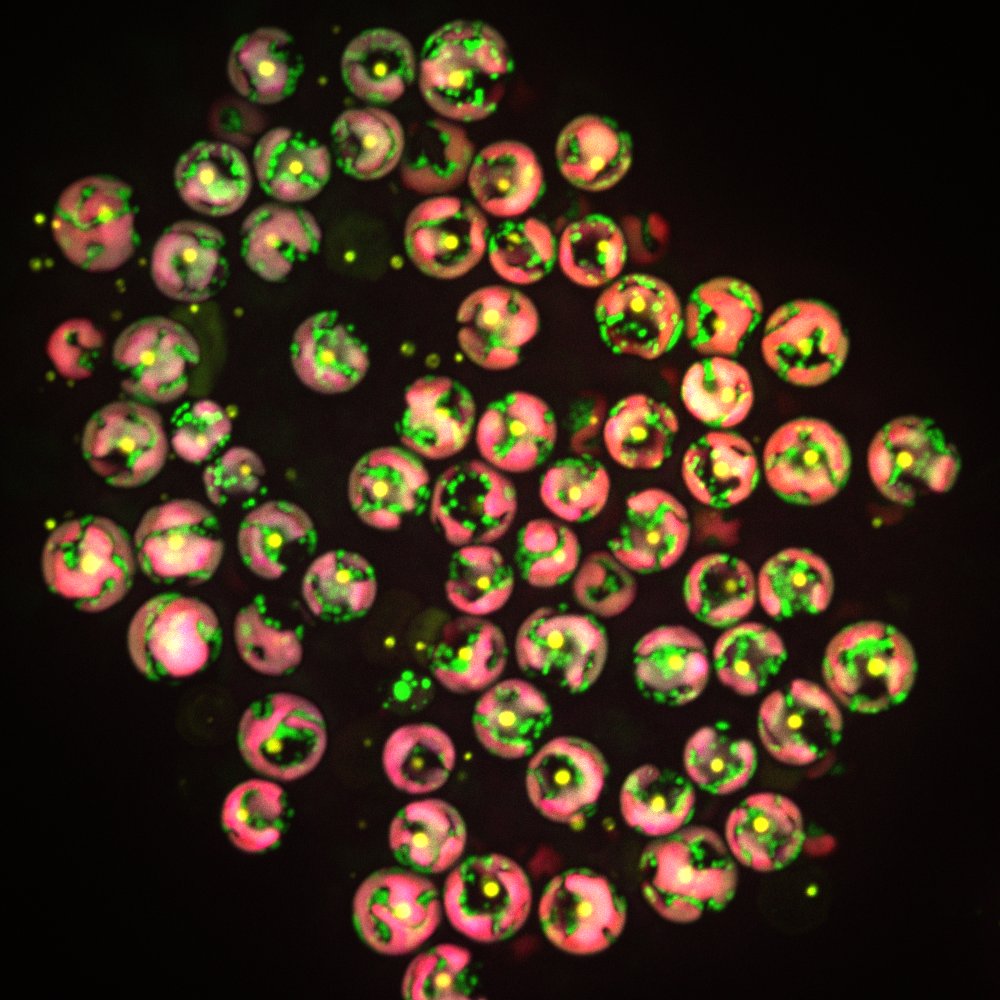
One of the Forest Park samples showed promise. After several weeks, the test tube filled with green matter. Microscopic images revealed that the large cells with organelles and a massive chloroplast were a type of alga, not a bacterium. Further analyses and DNA sequencing indicated that Wolf and Blankenship had isolated a new species. The far-red enrichment approach had worked.
To figure out how the novel organism is able to grow under far-red light, Wolf purified the proteins and pigments that make up its light-harvesting machinery and allow it to collect far-red light. These proteins are delicate and extremely sensitive to red and white light, so he had to work in the walk-in refrigerator with only a green light. Wolf built this light for the Blankenship lab using – you guessed it – LEDs. Since then, photosynthesis researchers at other universities have even asked him to build custom LEDs for their projects.
Collaborations across Washington University’s campuses, with members of the Photosynthetic Antenna Research Center (a research center housed at WashU and funded by the Department of Energy), and with algae experts from around the globe, expanded the tools Wolf could use for his projects on far-red photosynthesis. Working with professor Ursula Goodenough (now emerita) and the imaging core WUCCI to examine the isolate with an electron microscope, Wolf uncovered more details about the microbe’s massive chloroplast. His analyses revealed that the microbe has developed several biochemical tricks for efficiently collecting and harnessing far-red light, which are detailed in the March issue of Photosynthesis Research.
The Blankenship lab is interested in the possibility of introducing these systems into agricultural crops to improve the efficiency of photosynthesis. Plants that could use far-red light could be grown in the shade of other crops, for example, or the lower leaves of a single crop could be engineered to collect far-red light, perhaps boosting food production.
For now, Wolf, who is a William H. Danforth Fellow in Plant Science and co-president of the BioEntrepreneurship Core, has a soft spot for the new microbe he isolated. But there are other tubes full of green stuff tucked away in his far-red growth chamber, and odds are good that another elusive species awaits discovery.
